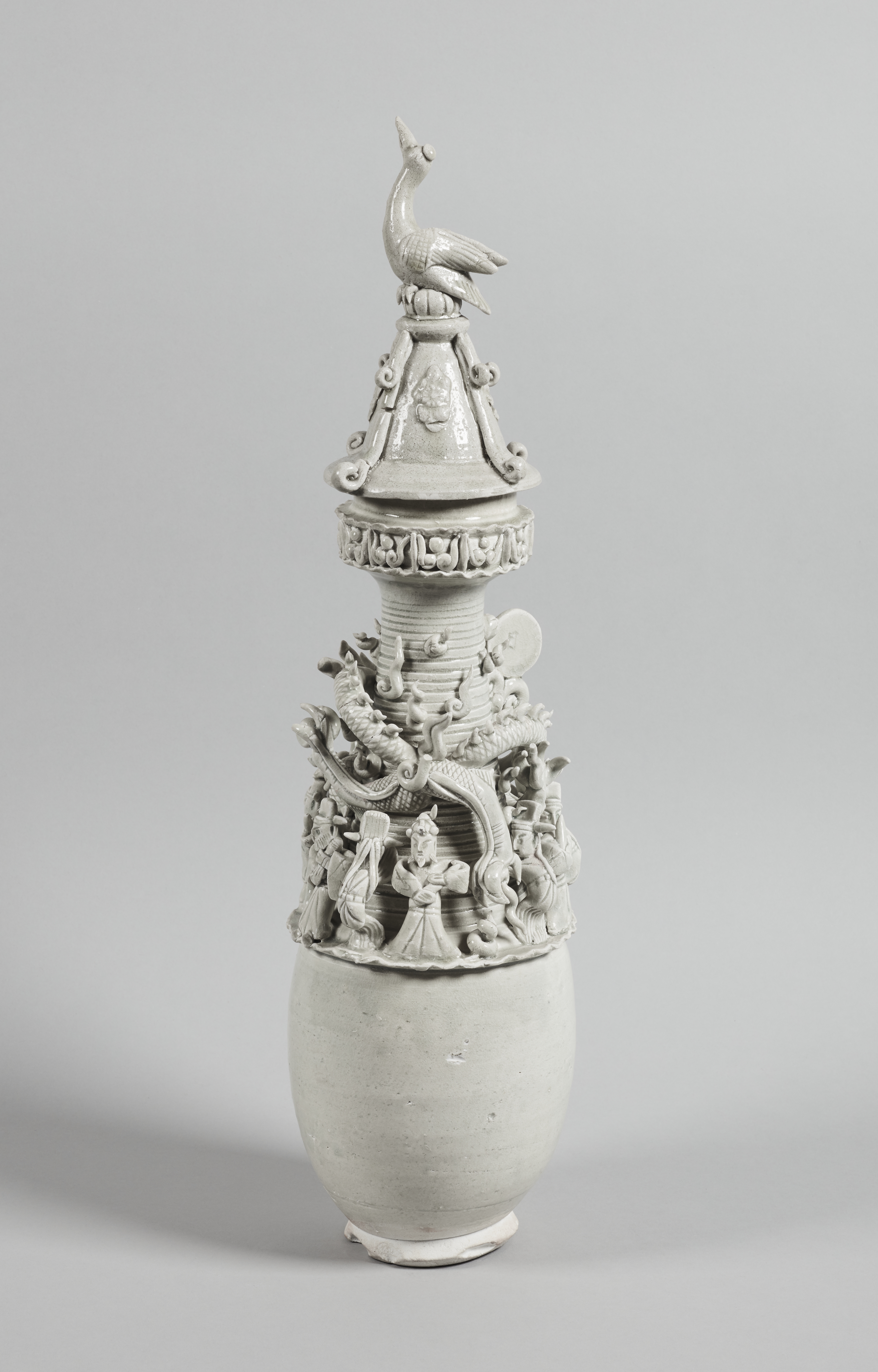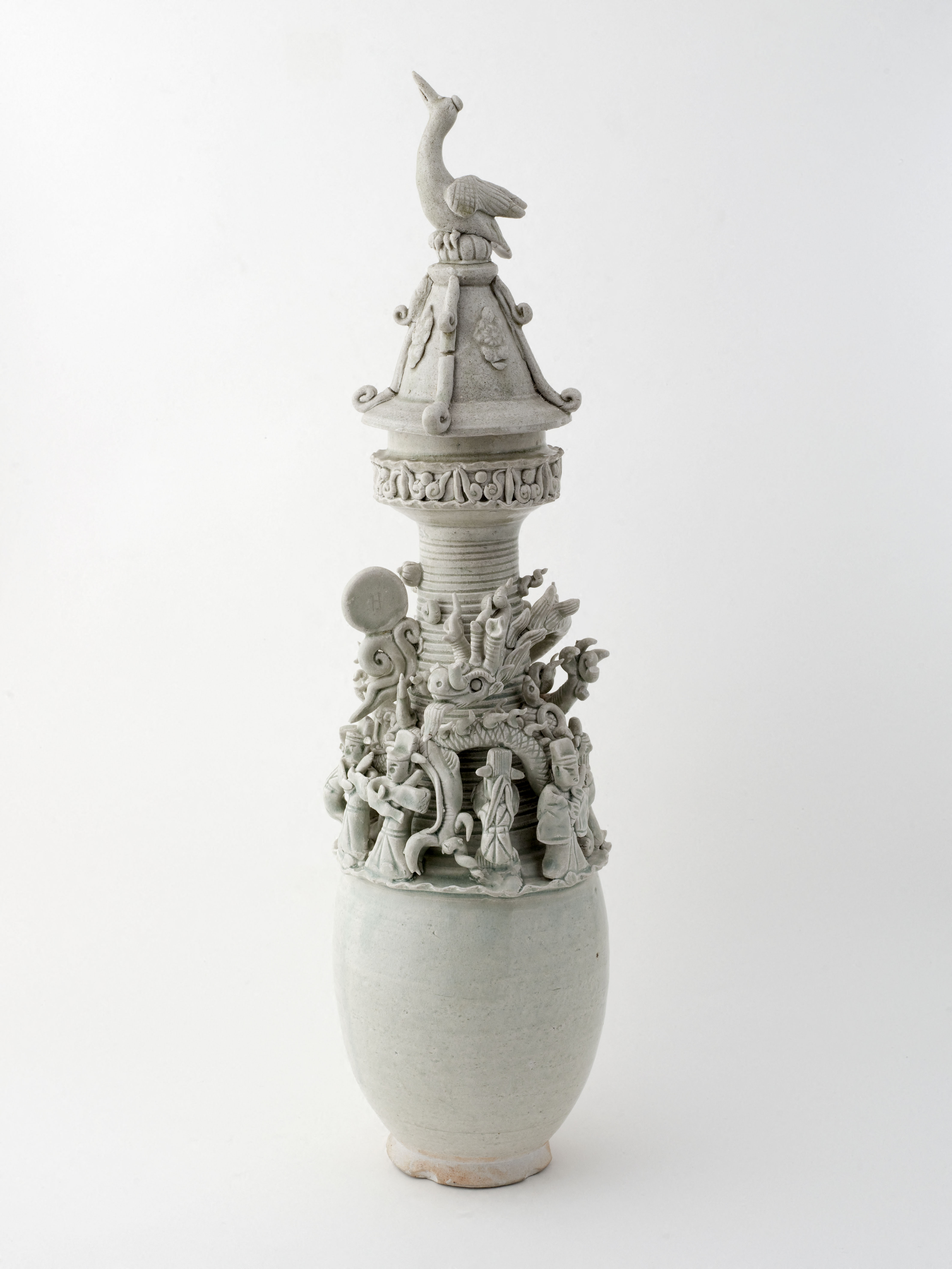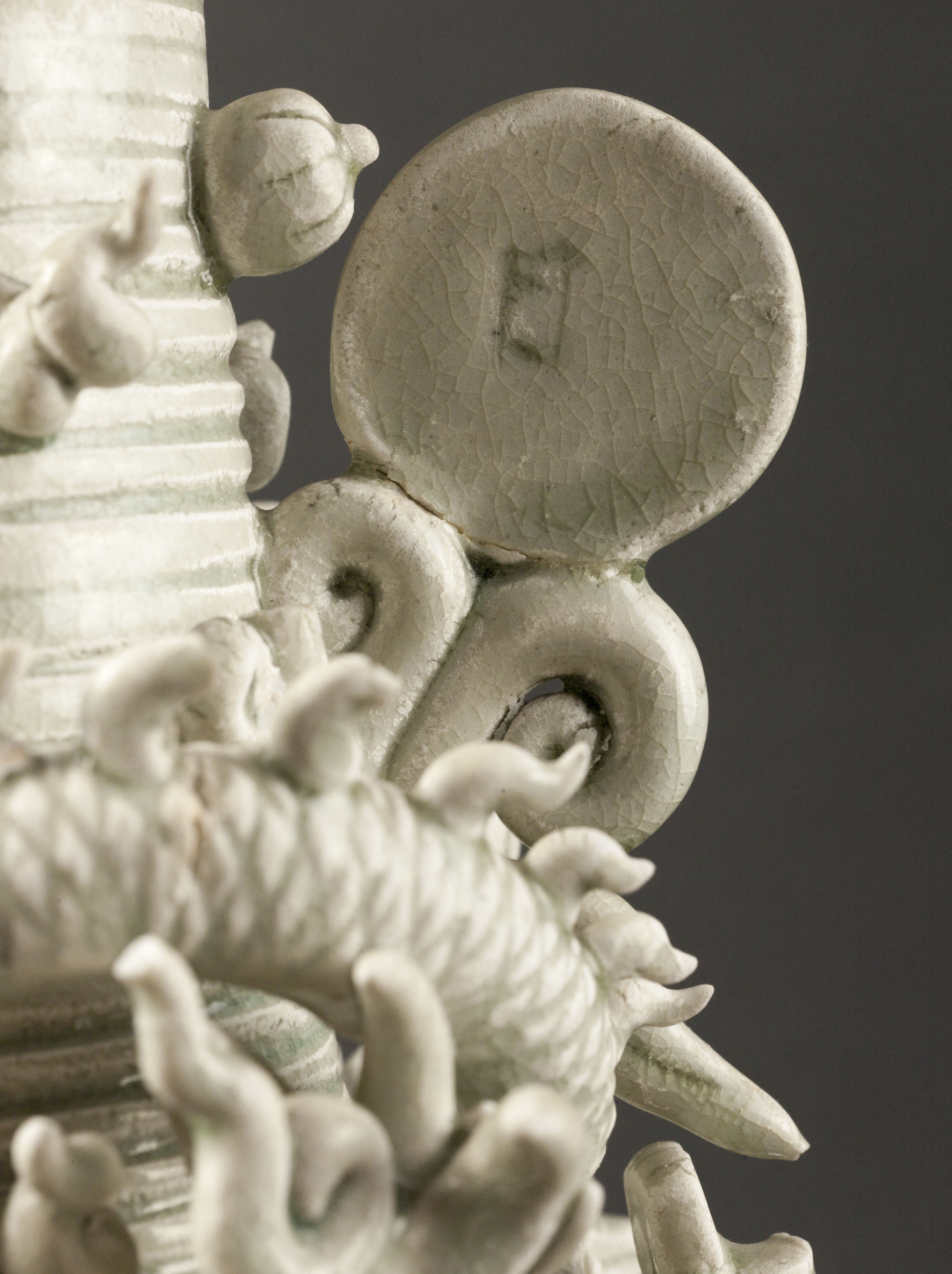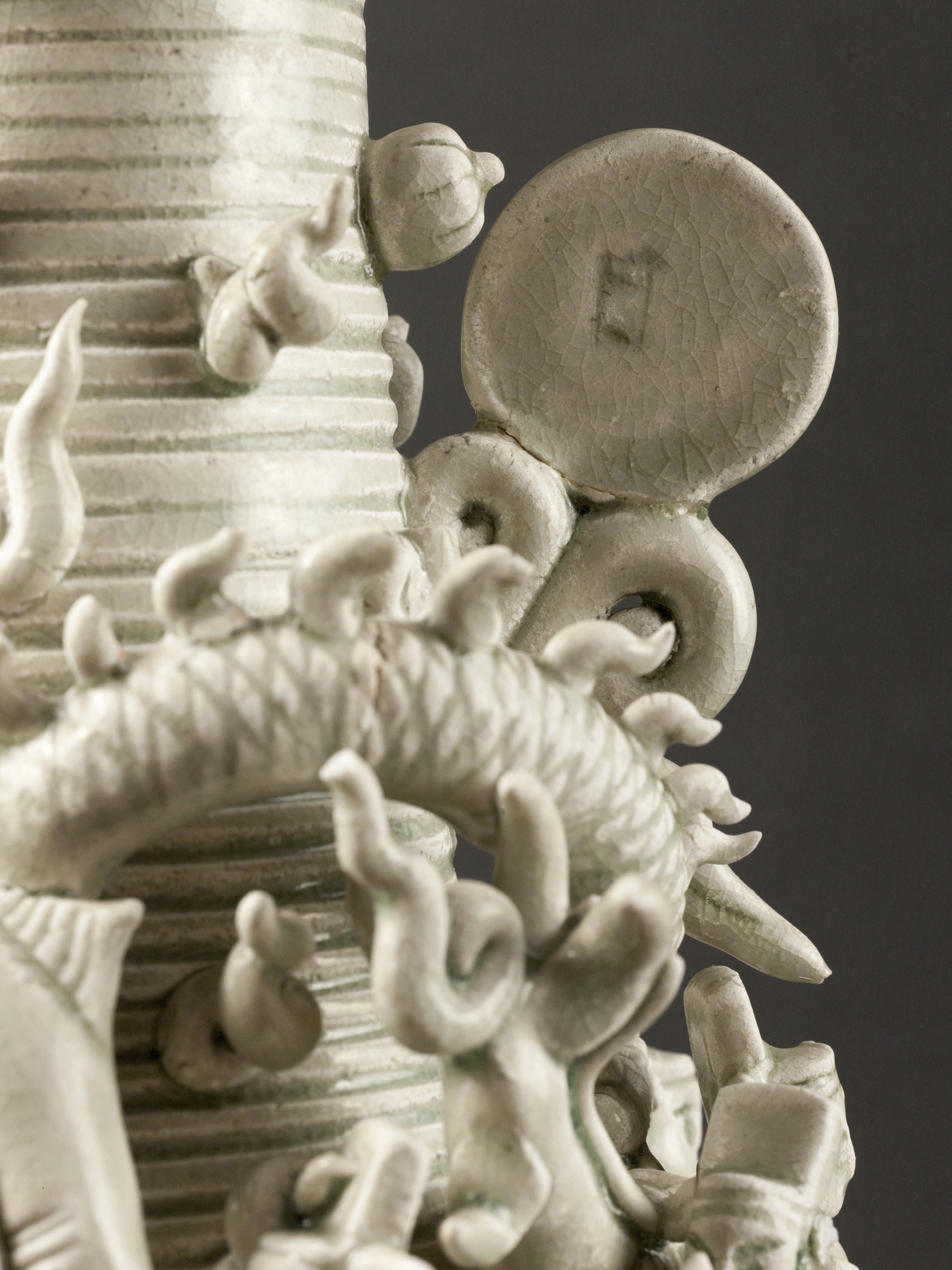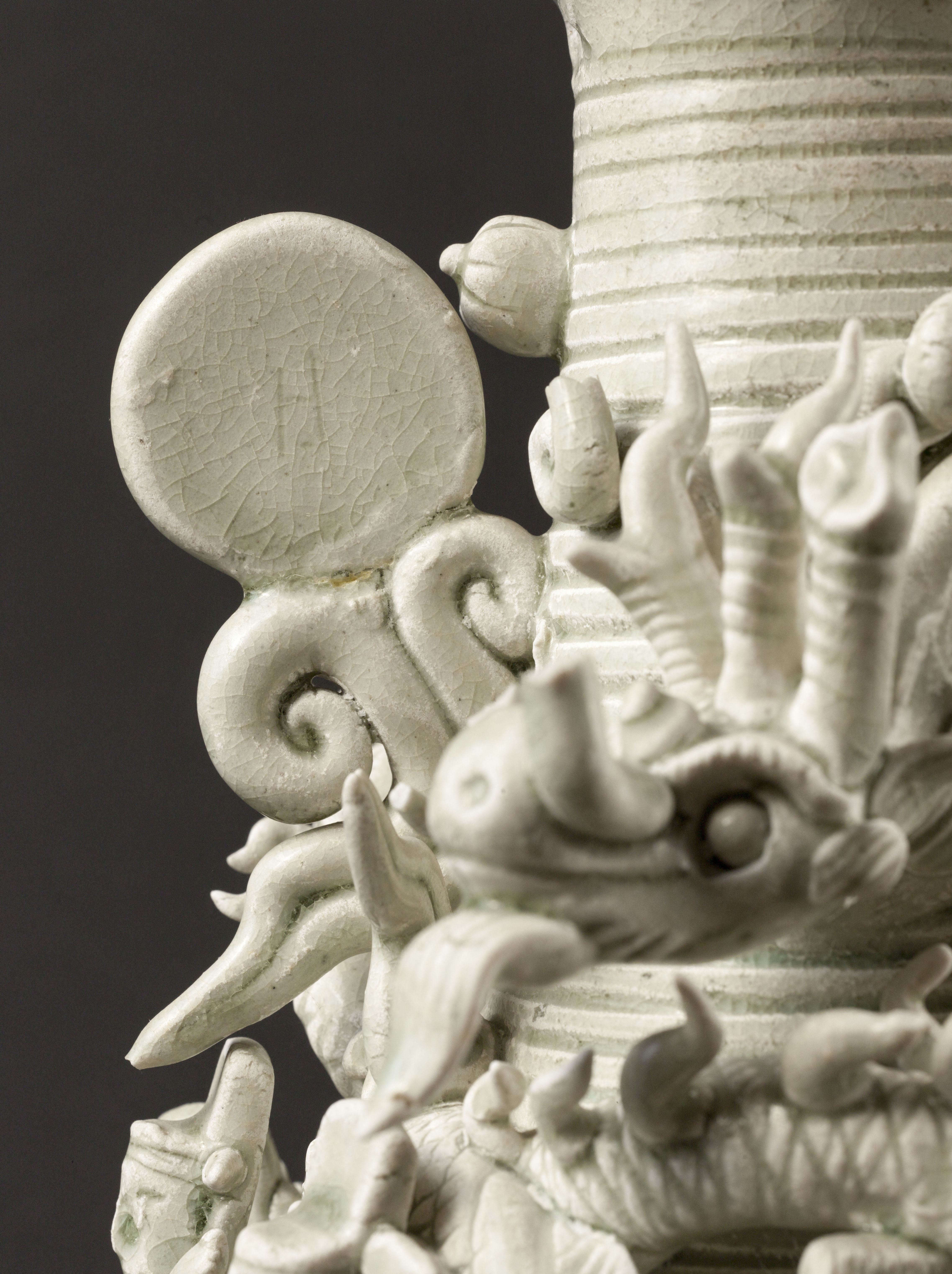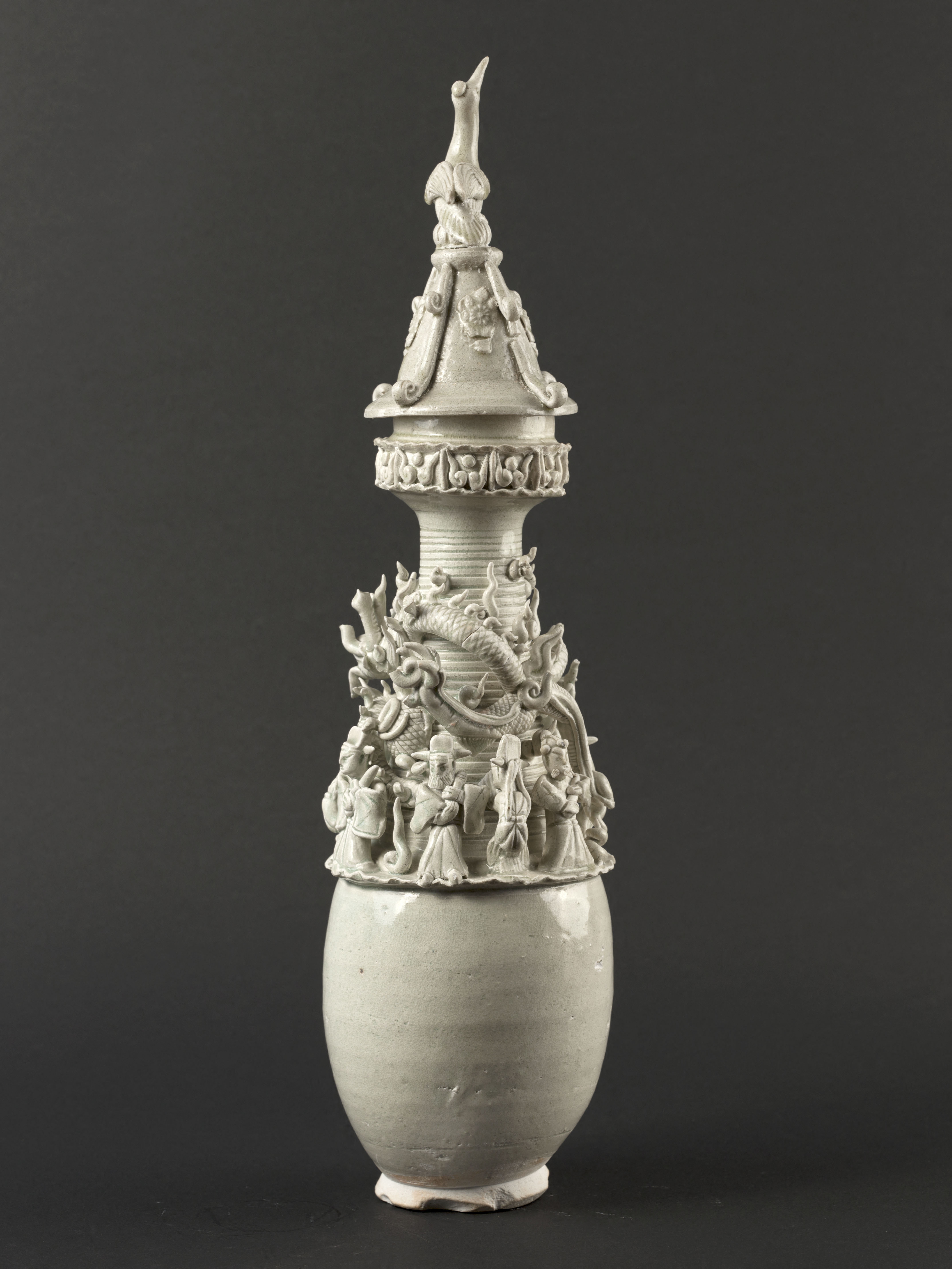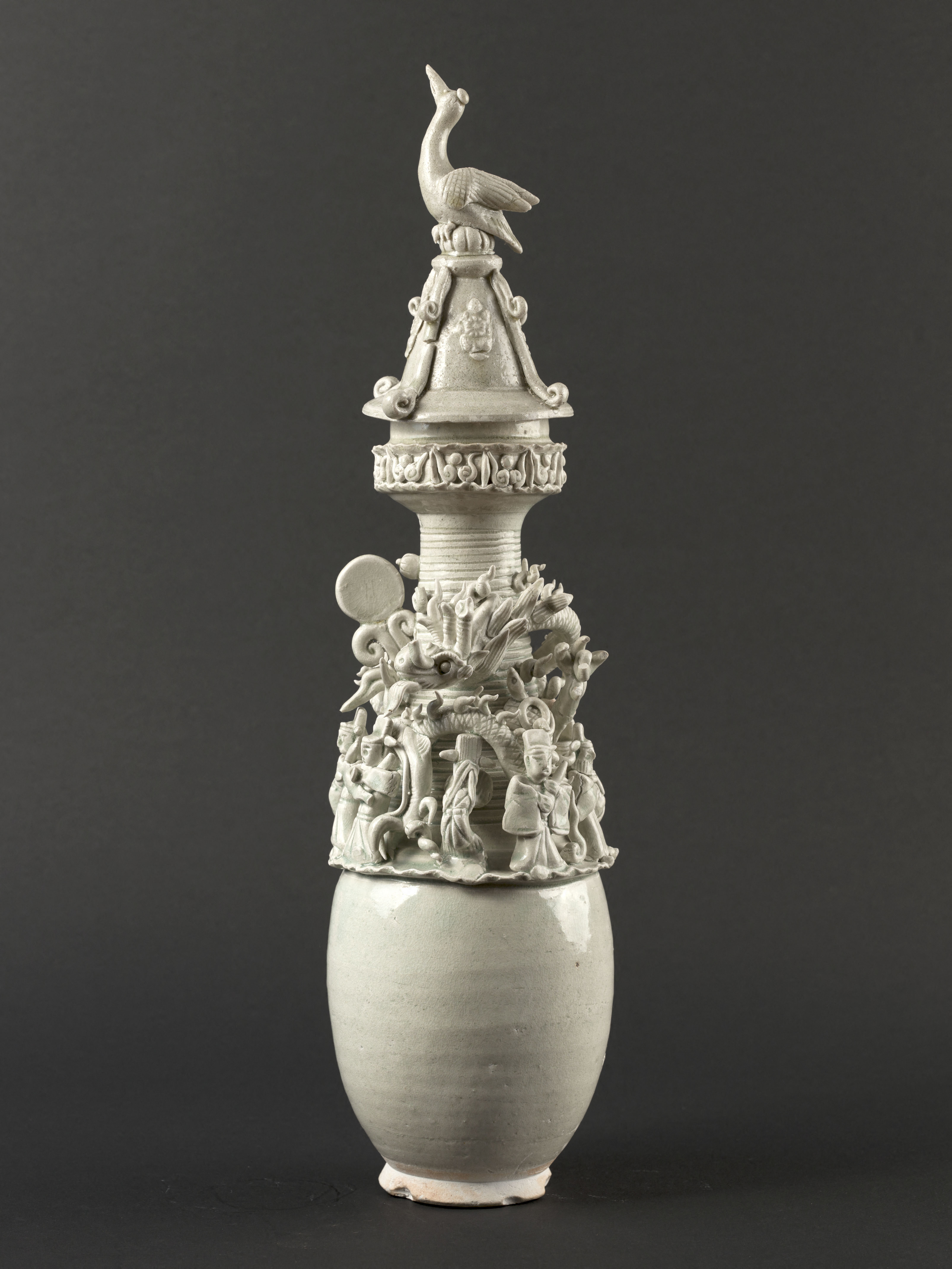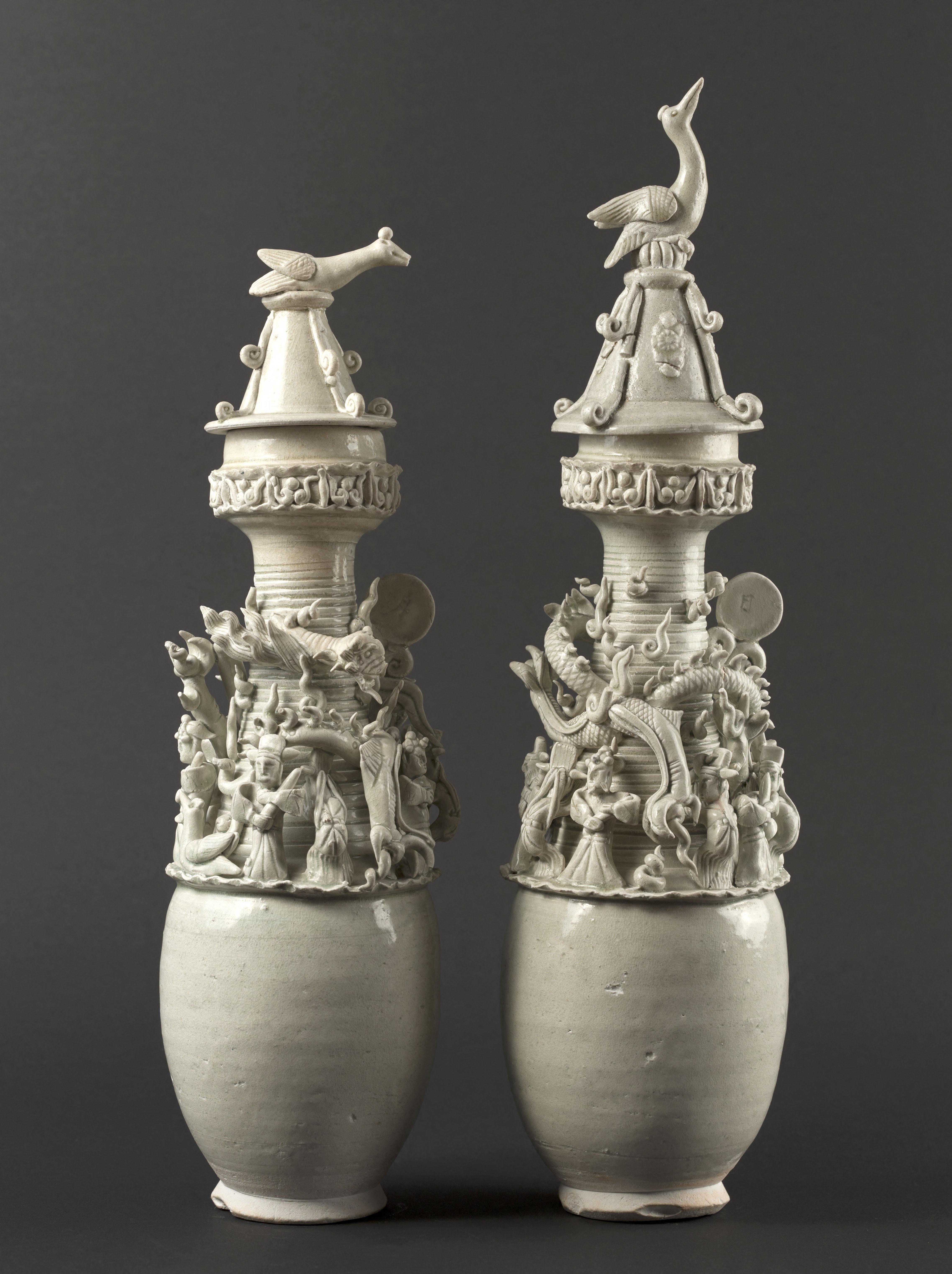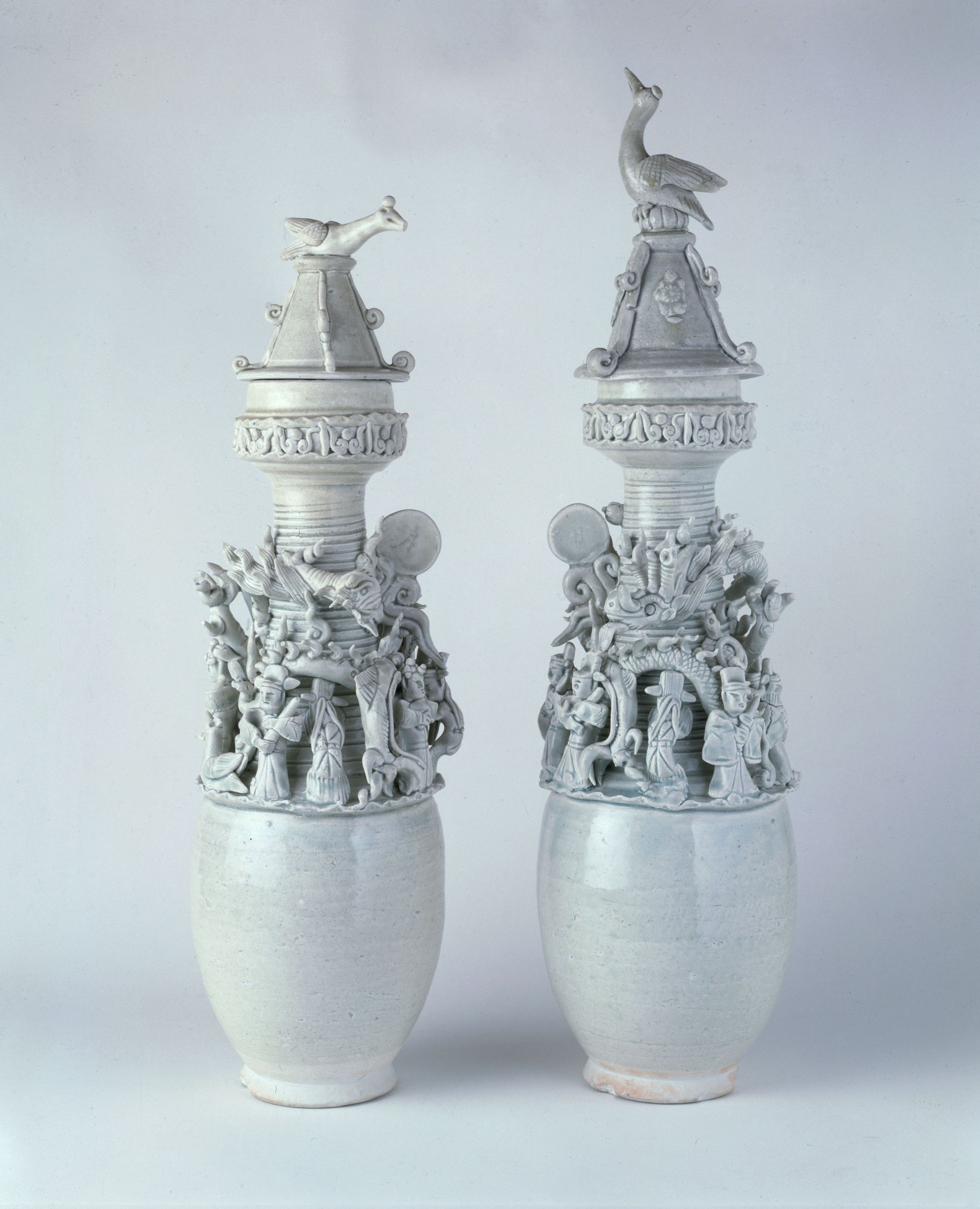
Jarre funéraire
Porcelaine, Céramique tournée, Couverte qingbai, Moulage, Modelage, Décor rapporté (céramique)
Objet symbolique, Jarre
Achat
M.C. 9810
These are two unusual funerary vases. Classic Song funerary vases, with their rarely preserved lids topped with a bird, feature, on their upper part, a row of static, standing figures – often twelve of them like the Earthly Branches and often associated with zodiac hours – under a dragon coiled around the neck with the sun disk. The porcelain is more often creamy white than blueish white, although blueish white porcelain is the hallmark of funerary pieces of the time.
Here, instead of standing in a rigid line, the figures – nine on the tiger-vase, ten on the dragon-vase – look alive with movement, seen sometimes from the front, sometimes from the back, and wear a sort of literati’s winged cap. Harking back to techniques used in the south since Han times – as illustrated by the statuette of a female dancer from the later Han period, found in 1954 in Canton, reproduced in numerous publications – the arms are made of a roll of clay flattened into scarf.
The other aspect of the decoration is equally interesting. The two vases truly form a pair. Coiled around the neck of the vase with the highest lid is the Dragon, symbol of the East, with a disk bearing the character for “sun”; on the other is the Tiger, symbol of the West, very snakelike but recognisable by the character wang (“king”) inscribed on its forehead, accompanied by a disk marked with the character for “moon”. This is unmistakably a representation of the four cardinal directions: on the sun vase is the Dark Warrior – the tortoise and the snake – symbol of the North, and on the moon vase is the Red Bird, symbol of the South.
This is an extremely rare pair. Yet among blueish-white porcelain pieces is a pair measuring 49 cm with the twelve figures, one with the sun and the dragon, the other with the moon and the tiger. It was found in a tomb dated 1204, in the town of Jiujiang in Jiangxi, in (Kaogu, 1984, no. 8).
Another reference appears in an article on the qingbai porcelains of the Southern Song, excavated from the Jiangxi tombs in Qingjiang (Kaogu, 1989, no. 7, p. 672, fig. 6): in a tomb dated 1258, there was a pair of vases standing 60.4 cm tall, with a lid topped with a bird and the twelve figures lined up in a row, as well as the moon and the animals of the four cardinal points. Unfortunately the details are hard to make out in the illustration.
Marie-Thérèse Bobot, Chine connue et inconnue : Dix années d'acquisitions au musée Cernuschi, Paris, Paris-Musées, 1992, p.148-150.

